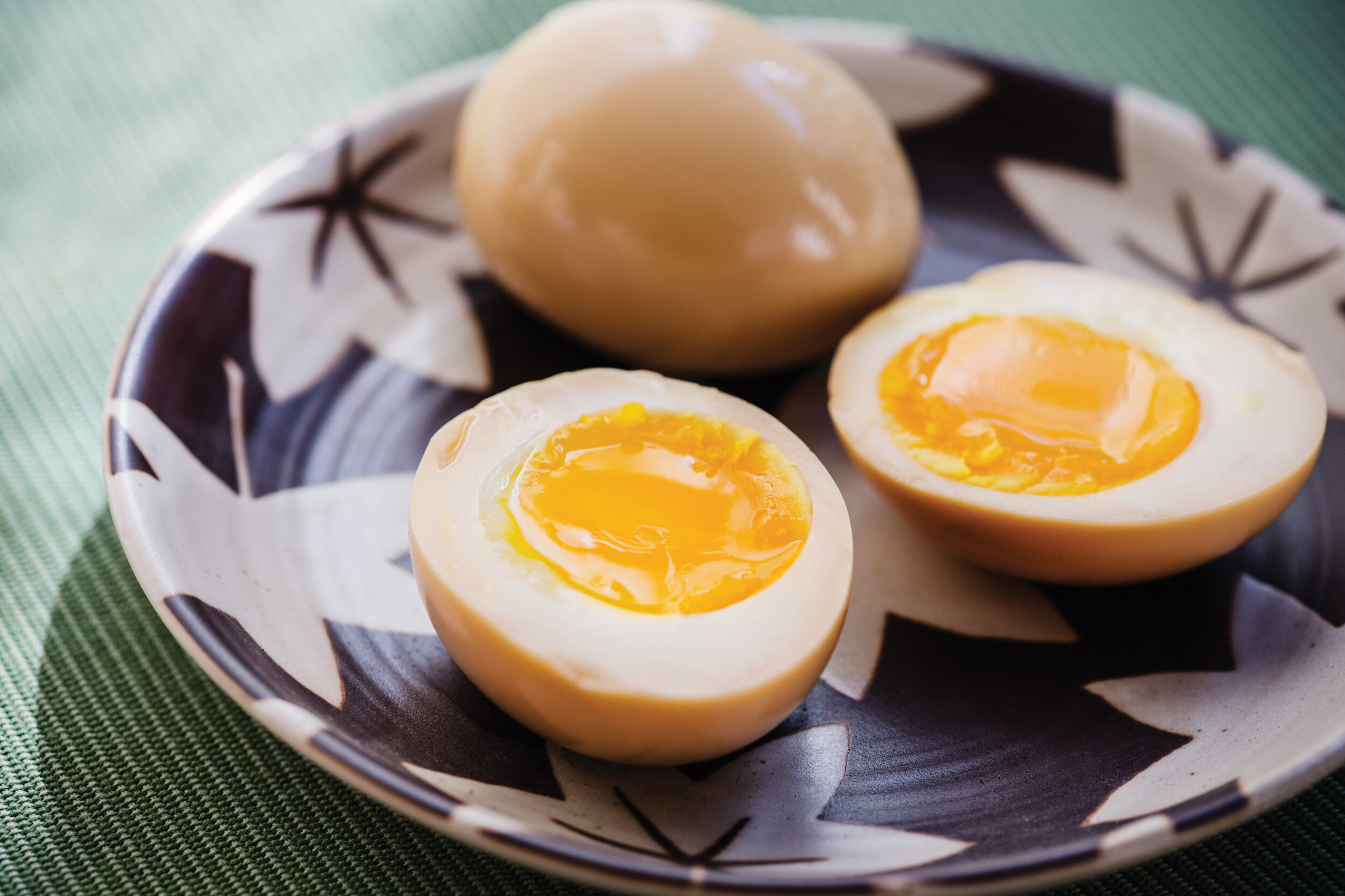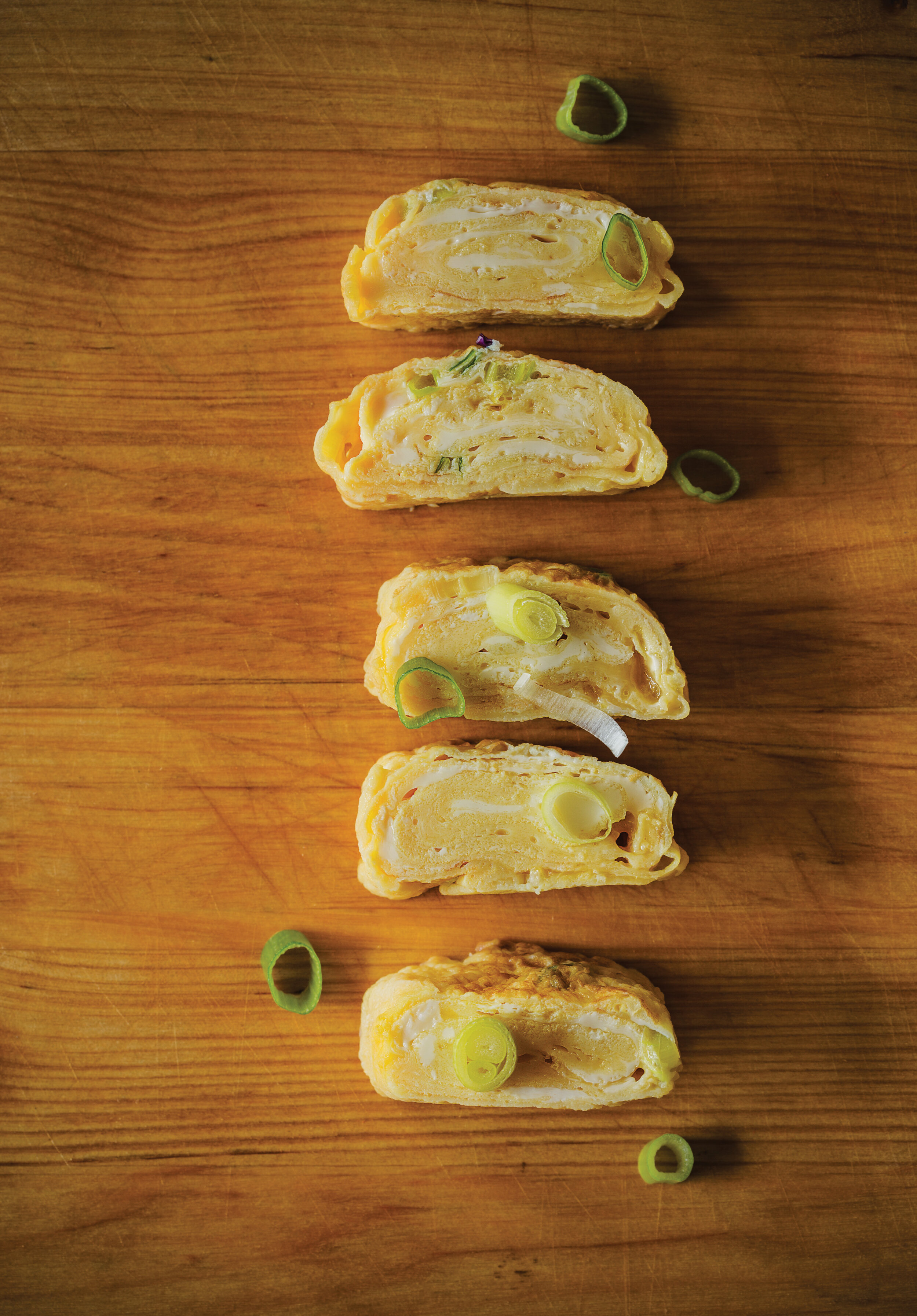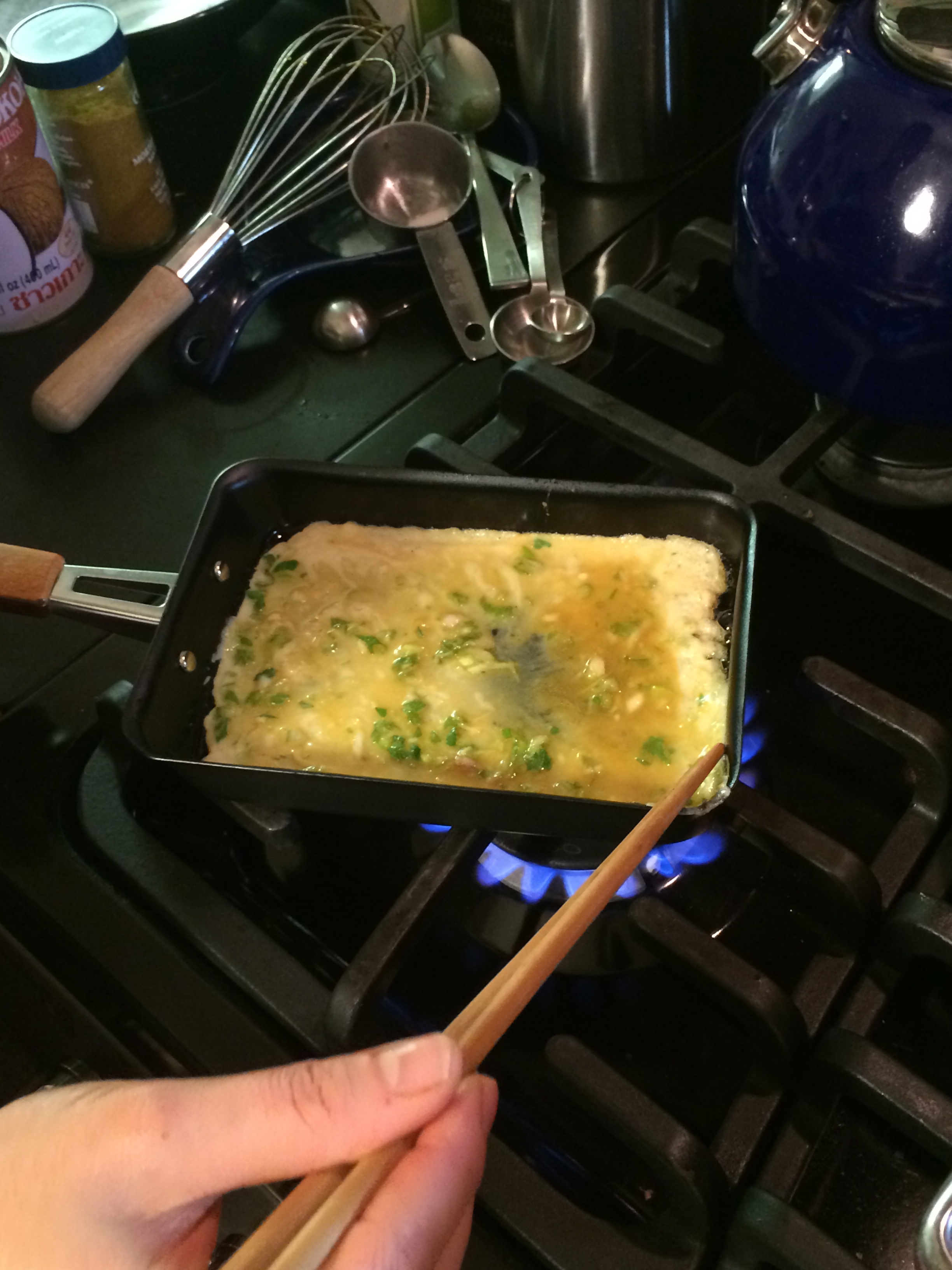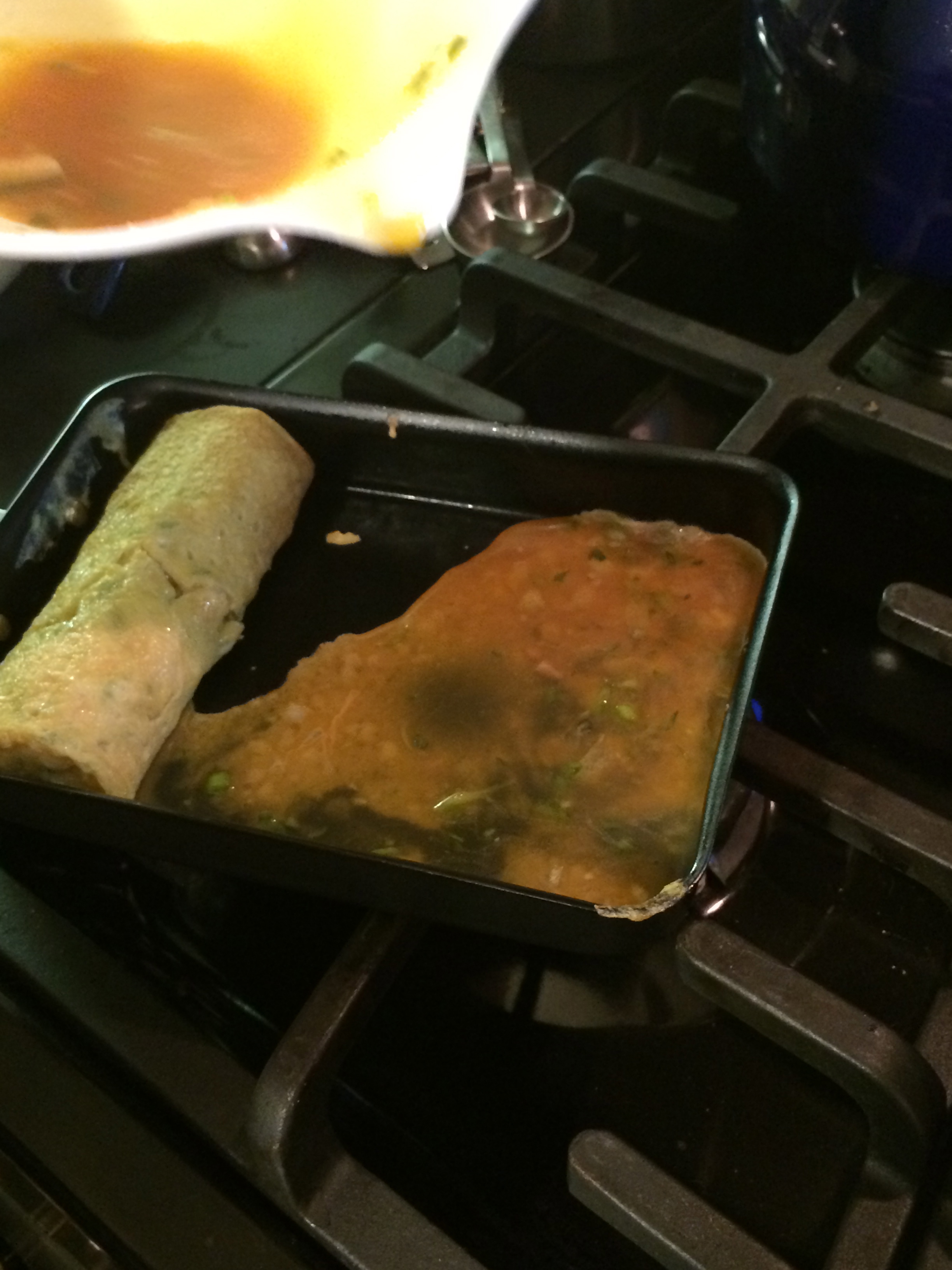On my culinary adventure to seek out the best bowls of ramen at proper ramenya’s, one thing remained consistent - high quality bowls were topped with a perfect half-cooked egg: a centered bright yolk the color of a gleaming sunset - just barely cooked, resulting in a thick liquid center that oozes all over your ramen with whites that are smooth as silk, springy but still firm, with no trace of grey or pale yellow anywhere. A perfect egg completes a bowl…but who has time to be perfect? My friend Robin can’t stand a runny yoke, I get it. So make your egg(s) the way you like them: half-cooked, fully-cooked, poached, raw, Japanese omelet style. Here are the recipes for three different egg options to suit your egg-fancy.
Ajitsuke Tamago (Marinated Half-Cooked Egg)
I try to save time when it comes to cooking in my house, so this recipe is actually two. The ingredients I use to soak my half-cooked eggs in are the same as my mom’s recipe for teriyaki sauce. If you want to skip the teriyaki sauce step entirely, then that’s fine too. The other short cut – if you are making or plan to make Chashu or Kakuni, then you can use the braising liquid left over to soak your eggs
Ajitsuke Tamago (Marinated Half-Cooked Egg)

Ingredients
- 6 eggs at room temperature. Eggs should be brought to an even temperature in a warm bath before boiling so that cooking times do not vary. Also, poke a pin-sized hole in the bottom of the shells of the eggs for easy peeling later.
- ½ cup bonito fish flakes
- 1 cup shoyu (soy sauce)
- 1 cup sugar
- 1½ tsp grated ginger
- 1 tsp minced garlic
- ½ cup mirin (sweet rice wine)
Instructions
- In a medium saucepan over high heat, whisk together the shoyu, sugar, ginger and garlic in a medium saucepan. Once the mixture starts bubbling and the sugar dissolves, remove the heat. Make sure it doesn’t bubble over. Stir in the mirin and cool to room temperature or refrigerate for at least 1 hour.
- Bring a large pot of water to a boil. With a slotted spoon or a Chinese strainer, gently add the eggs to the boiling water, and immediately set a timer for 6 ½ minutes.
- While the eggs are cooking, prepare an ice-bath for them. When the eggs are done, immediately transfer them to the ice bath. Let them cool in the ice-bath for about 10 minutes, then remove the eggs and peel them.
- In a shallow container that is deep enough for the eggs to be covered in liquid, combine 3 cups (700ml) water and 1 cup (235 ml) teriyaki sauce or 1 cup (23 ml) Chashu liquid. Add your eggs; cover them with a paper towel by pressing the paper towel down so it’s touching the top of the eggs; and sprinkle the bonito fish flakes over the paper towel - the weight of the epapr towel will help the eggs marinate on all sides and the bonito will flavor the eggs. Let marinate and refrigerate for up to 2 days.
- Remove the eggs from their soaking liquid, and cut each one in half with a very sharp knife. You’ll end up with a beautiful half-cooked egg filled with liquid-gold goodness, ready to complete any ramen recipe!
Poached Eggs
Poached eggs aren’t as labor-intensive as Marinated Half-Cooked Eggs, and their runny center provides an instant sauce to swirl into ramen soup. Cook them ahead of time and when your other ramen components are ready to assemble, just warm the poached egges in the ramen cooking water for 10 seconds before slicing and gently transferring to the bowls.
Makes as many eggs as you need
Prep time: 10 minutes
Ingredients:
Eggs (as many as you need)
Dash of white vinegar or a squeeze of lemon juice
Directions:
Fill a medium-sized pot with about 1½ inches (3.5 cm) water and bring to a boil over high heat. Add the white vinegar or lemon juice - this will help the eggs to coagulate quicker and reduce the amount of feathering around the edges, but don’t add too much or the eggs will taste sour. Once the water comes to a boil, reduce to just above a simmer.
Crack an egg into a small ramekin or cup. If poaching more than one egg, prepare up to 3 ramekins at a time - I don’t recommend cooking more than 3 at a time.
Gently slide the eggs out of the ramekins and into the simmering water. Take care not to crowd the pan.
Cook the eggs until the whites are opaque, about 3 ½ minutes.
With a slotted spoon, transfer the cooked eggs to a paper towel to drain. If not using immediately, store in a water bath in an airtight container and refrigerate for up to 2 days.
Japanese Omelet – Tamagoyaki
You will need a Japanase tamagoyaki frying pan (it’s rectangular), to get a visually appealing omelet. If you don’t have one, a regular frying pan will work but you end up with the uniform rectangular shape that distinguishes this omelet.
Makes enough for 4 ramen portions
Prep time: 10 minutes
Ingredients:
3 eggs
1 green onion, chopped
1 teaspoon shoyu (soy sauce)
1 teaspoon sugar
¼ teaspoon salt
Nonstick cooking spray
Directions:
In a medium sized bowl, whisk the eggs with the green onion, shoyu, sugar and salt until foamy.
Over medium-high heat, warm 1 teaspoon vegetable oil into your tamagoyaki frying pan. Drip a tiny bit of oil in a frying pan - if it sizzles on contact, the pan is sufficiently hot. Add about a quarter of the egg mixture to the pan and tilt the pan so that the egg mixture covers the bottom in thin, even layer. The egg will start cooking quickly so you’ll need to move fast.
Using chopsticks, gently roll the egg mixture tightly towards you from the part of the pan furthest from the handle.
Quickly add a little more cooking spray to the exposed part of the pan.
Pour another quarter of the egg mixture into the pan, lifting up the cooked portion to get some egg underneath it to cook.Roll the egg mixture away from you this time as it combines and attaches to the cooked egg layer. Nudge it to the back to the front of the pan, where you started before.
Repeat two more times until you’ve used all of the egg - the omelet will obviously increase in size with each layer.
Roll the omelet out of the pan and you should have a rectangular-shaped block with your layers of egg. Let cool and slice vertically before serving.











